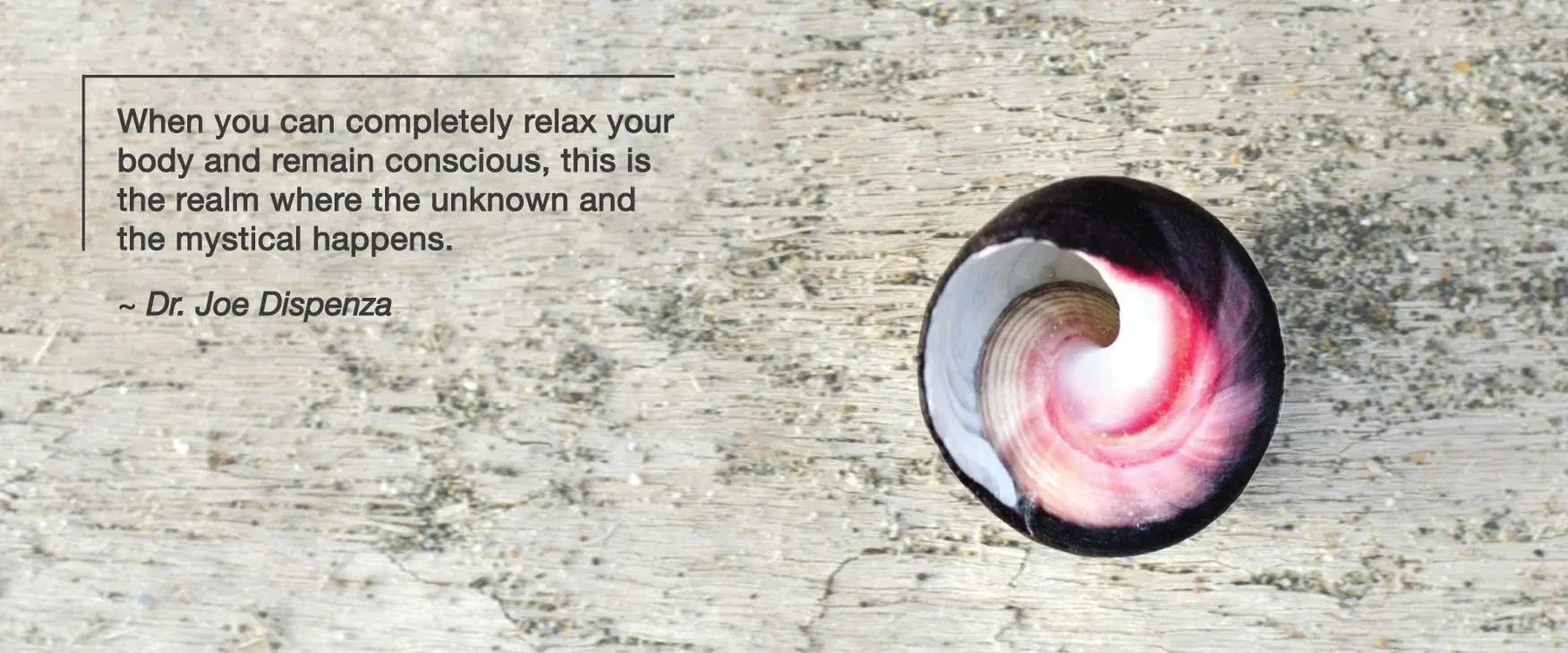Demystifying the Meditation Process
Dr Joe Dispenza | 27 May 2016
If your meditation practice continuously feels like a herculean effort, and you can’t stop thinking, analyzing, and wondering if you’re doing it right, you’re doing the exact opposite of what you’re trying to accomplish. That’s why I want to demystify the meditation process.
The purpose of meditation is to slow down your brain waves and get beyond the thinking, analytical mind. What I want you to understand is that you already know how to do this, because you do it every day.
If you can begin your practice with the understanding that all you’re doing is relaxing your body (just like when you’re falling asleep) while keeping your mind conscious and awake—and if you can continuously move deeper into this state of relaxation while focusing on nothing (or not thinking)—you’ve just opened the doorway between the conscious and subconscious mind.
The Ladder of Consciousness
When the conscious mind is awake and functioning optimally, it exists in the realm of the beta state. But when the brain is in high beta, that means it’s in a highly aroused, overly-active state. This usually indicates someone is living in an emergency mode—otherwise known as fight or flight.
Once you get beyond beta, the first layer of the subconscious is the alpha brain state. In alpha, your breathing naturally slows down, the voice in your head quiets, and the more you continue to relax, the more you begin sliding down the ladder of consciousness into the theta and delta states. It takes relaxing, getting comfortable, and discontinuing thought to change your brain and body’s physiology—and you do this every night as you fall asleep.
The antithesis is also true. When you can’t sleep at night, it’s typically because your mind is racing and you’re processing thoughts about your family, job, health, an upsetting event that happened earlier in the day, and of course—a worst-case future scenario that doesn’t actually exist.
This type of circuitous, negative thinking manufactures corresponding chemicals in the brain that signal the body to feel emotionally. Once we feel those emotions like frustration, judgement, fear, or anger, we tend to think more thoughts equal to those self-limiting emotions. When this happens over and over, our body becomes addicted to these emotional states, and thus becomes addicted to the hormones of stress—further miring us in negative feedback loops. As a result, instead of sinking deeper into consciousness, our brain waves climb the ladder to higher levels of beta brain wave activity. In fact, this is where we enter the realm of high beta brain waves and now the analytical mind is now overly active.
It’s through our meditation practice that we can enter the subconscious and change our unwanted programs. Think of the subconscious as the brain’s operating system. By dropping into the operating system of the brain, we can alter habits, behaviors, and remove emotional scars. If you’re not trying to change anything, you can simply open yourself up to receiving unknown possibilities and create something new.
Body Asleep, Mind Awake
Look at it this way—falling asleep and waking up is not something we have to learn how to do, right? We do it every day.
These two times of the day are when the door to the subconscious mind naturally opens up. When we go to bed at night, the nighttime neurotransmitter melatonin makes our brain waves go from beta to alpha, from alpha to theta, and from theta to delta. When we wake up in the morning, serotonin—the daytime neurotransmitter—creates the same process in reverse; our brain waves go from delta to theta, from theta to alpha, and from alpha to beta.
As we close our eyes and begin the meditation process, it makes sense that we are changing our brain chemistry from serotonin to melatonin, and thus our brain waves follow suit. As we sit still and relax our body, we stop thinking because our brain is naturally processing less sensory information.
If we can allow our bodies to begin to fall asleep while we are aware of our inner world, we’re in the perfect state to begin our transformational and/or creative work. Just like it’s harder to fall asleep when the neighbor is mowing his lawn, your teenager is playing hip-hop music in the next room, or there’s coffee brewing in the kitchen—it’s harder to get into that meditative state because the external sensory information keeps us focused on our outer world, instead of our inner.
The Takeaway
Like riding a bike or playing tennis, what I want you to understand is relaxing the body yet staying conscious is just a skill to develop (there’s a reason why we call mediation a practice). When you can completely relax your body and remain conscious, this is the realm where the unknown and the mystical happens.
By sensing the vastness of space around you and becoming no body, no one, no thing, no where, in no time—your body, other people, things in your environment, and past and future events no longer become the object of your attention. You (as consciousness—not the body) are no longer picking up the sensory information around you, which means you’re no longer living by the hormones of stress. In this state, you’re not awake, you’re not sleeping, and you’re not dreaming; you’re in the transcendental state. This is the unknown realm and this is where the door opens to events like out-of-body experiences, spontaneous healings, and mystical moments.
So the next time you sit down to meditate, I want you to remember that you already know how to do this. Slow down the process and really feel in each one of those stages. Stay aware, expand into the future you’ve always wanted, and connect to the feelings of that new future.
Know that the life you’ve always wanted to live awaits you. You just have to make the journey.
Photo by luciajoy.com

Comments